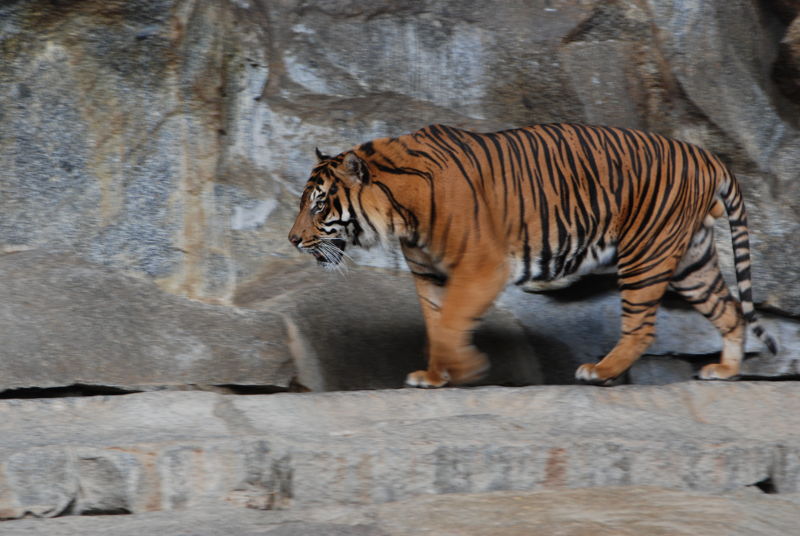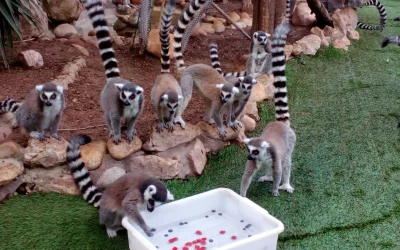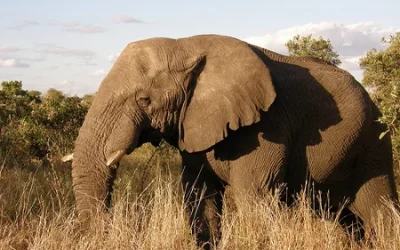X. Manteca, M. Salas
Stereotypies are one of the most commonly used indicators of poor welfare in zoo animals and there is no doubt that they are indeed very useful. The motivation of stereotypies is complex and probably varies with the type of stereotypy that is considered. In general, however, it appears that both stress and the inability to perform some important species-specific behaviours contribute to the development of stereotypies.
WELFARE ASSESSMENT: GENERAL PRINCIPLES
Animal welfare can be assessed by the use of indicators, i.e. of variables that can be measured objectively. Welfare indicators are divided into two groups: environment-based and animal-based indicators.
Environment-based indicators include the size and design of facilities where animals are kept, the quantity and quality of food they receive, the temperature at which they are exposed, etc.; in short, environment-based indicators are variables that are not measured in the animals but in their environment.
Animal-based indicators can be grouped into four main categories:
- Indicators related to the behaviour of animals.
- Indicators related to the appearance of animals.
- Physiological indicators.
- Indicators obtained from the records of zoological institutions, such as the life expectancy of animals and the prevalence and incidence of diseases.
Stereotypies are one of behavioural indicators most commonly used to assess the welfare of zoo animals.
STEREOTYPIES: DEFINITION AND CLASSIFICATION
Stereotypies are defined in two ways:
- Repetitive, invariant behaviour without apparent immediate function.
- Repetitive behaviours caused by the animal’s repeated attempts to adapt to its environment or by a dysfunction of the central nervous system.
Both definitions agree that stereotypies are repetitive behaviours. The second definition, however, includes behaviours that despite being repetitive are not always performed in exactly the same way. Moreover, it does not assume that stereotypies lack a functional role; this is particularly relevant because it has been suggested that some stereotypies could facilitate the adaptation of animals to an unsuitable environment.
According to the repetitive movements performed by the animal, the following stereotypies have been described in mammals:
Locomotory stereotypies, including pacing and similar behaviours.
Oral stereotypies, including repetitive movements with the tongue or repeatedly biting an object.
Repetitive movements of the whole body without the animal moving from one place to another. This category would include, for example, a stereotypy sometimes shown by primates that consists of the animal moving its body backwards and forwards while seated.
Excessive grooming, leading sometimes to hair loss and dermatitis.
The most common stereotypies vary according to the taxonomic group. Thus, the most common stereotypies in carnivores are locomotory stereotypies while ungulates normally develop oral stereotypies. Furthermore, within the same taxonomic group there may be important differences between species in the kind of stereotypies they perform and sometimes these differences appear to be related to some aspects of the natural history of the species.

Carnivores living in zoos sometimes develop movement stereotypies in which the animal moves along the same path and repeats it over and over again. Stereotypies are one of the most common indicators used to assess the welfare of zoo animals.
CAUSES OF STEREOTYPIES
The motivation of stereotypies is complex and probably varies with the type of stereotypy that is considered. In general, however, it appears that both stress and the inability to perform some important species-specific behaviours contribute to the development of stereotypies.
Oral stereotypies in captive wild ungulates appear to be caused, at least partly, by the inability to perform normal foraging behaviour. In some domestic herbivores, digestive acidosis may contribute to the onset of oral stereotypies when animals are fed a diet rich in concentrate and poor in forage.
The motivation of locomotory stereotypies of carnivores is not known with certainty and is likely to result from the combination of several factors. Some studies suggest that lack of space is important, while others point to the inability to perform the normal behaviour of the species as the main cause. In carnivores, pacing is more common in those species that usually travel long distances in the wild.
There are differences between individuals of the same species in their tendency to develop stereotypes when kept in an unsuitable environment. Most likely, these individual differences are due to both genetic and environmental factors. In relation to environmental factors, it has been suggested that a stressful environment in the early stages of postnatal development of the animal causes permanent changes in the CNS, which results in turn in a greater predisposition to develop stereotypies for the rest of the animal’s life.
Moreover, learning can be involved in the appearance of stereotypies. Specifically, the presence of other animals that have already developed a stereotypy could in some cases increase the likelihood that individuals who do not yet show stereotypies eventually develop them.
STEREOTYPIES AS ANIMAL WELFARE INDICATORS
Stereotypies are one of the most commonly used indicators of poor welfare in zoo animals and there is no doubt that they are indeed very useful. Despite this, and in order to avoid hasty conclusions about the welfare of a particular animal, it is interesting to recall the following facts:
- If an animal performs a stereotypy over a long period of time, it may become “established” i.e., it becomes a permanent feature of the animal’s behaviour. Consequently, there is always the possibility that an animal that shows stereotypical behaviour is in an adequate environment and the stereotypy has been “inherited” from a previous inappropriate environment.
- Stereotypies may appear as a result of a learning process and in this case may not be indicative of a lack of welfare, at least in the animal that has “copied” the stereotypy.
- Finally, there are individual differences in the predisposition to show stereotypies
REFERENCES
- Broom DM and Johnson KG (1993) Stress and animal welfare. Chapman & Hall, London.
- Mason G J (2003) Captivity effects on wide-ranging carnivores Nature 425: 473-474. 2003.
- Mason G J and Latham N R (2004) Can’t stop, won’t stop: is stereotypy a reliable animal welfare indicator? Animal Welfare 13: S57-S69. 2004.
- Mason G J (2006) Stereotypic behaviour in captive animals: fundamentals and implications for welfare and beyond EN: Mason G J and Rushen J (Eds.) Stereotypic Animal Behaviour. Fundamentals and Applications to Welfare, 2ª Ed. CAB International, Wallingford.
- Rushen J and Mason G J (2006) A decade-or-more’s progress in understanding stereotypic behaviour EN: Mason G J and Rushen J (Eds.) Stereotypic Animal Behaviour. Fundamentals and Applications to Welfare, 2ª Ed. CAB International, Wallingford.



